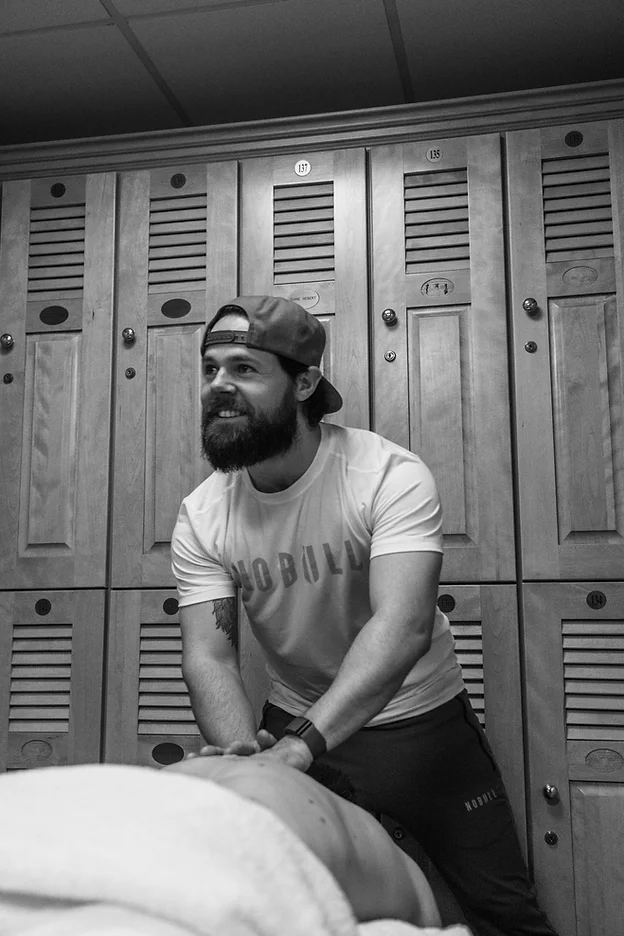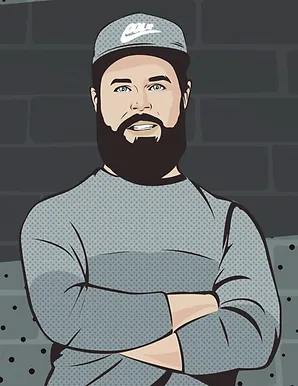
If you’re a golf fan, you’ve probably heard a bit about trainers on the PGA Tour. You’ve probably heard that PGA Tour athletes get worked on before and after a round.
But why are we needed on the PGA Tour at all? Isn’t golf a gentle sport on the body? Pro golfers’ swings look so good – balanced and effortless – so why would their bodies ever need work?
I’ve got a story that illuminates exactly why.
One of my athletes on the PGA Tour once came to me for a session, and said he’d been having a two-way miss. He’d been working hard on swing tweaks to correct those flaws.
So, I performed a routine assessment on his body and observed his right hip was sitting a little higher than his left, which is common for an elite, right-handed golfer. Loading into the right side repeatedly can torque the pelvis (which means to pull it out of alignment). I put him on the table and performed a leg length test and noticed his right leg appeared longer on the table than his left (what we see as a functional leg length issue). Standing in golf posture, I then noticed his pelvis was sitting forward and slightly open (pointing left). This alone began to explain why he’d been having swing issues.
Because his pelvis was open to the target at address, his posture and alignment were subconsciously drifting to the right with each swing in compensation for the shift in his centre of mass. Because his right hip was sitting higher than his left, he was having trouble rotating into it and wasn’t able to fully load up the necessary power. He was starting to feel a lot of tension through his right lumbar spine (his right lower back) because of the reduced space between his arms, ribs and pelvis on the downswing. That was fatiguing the muscles in his right lower back.
You can be the world No.1 golfer, but with these physiological issues, you’re going to struggle to perform at your best. It’s a consistency killer. He was then tweaking his swing around those setbacks.
The good news was it was a fairly simple fix.
We had a look at his postural alignment, and once we’d identified the right leg was appearing longer – because of that pelvic rotation – it was easy to reduce the tension around the right hip flexors with some soft tissue therapy, trigger point therapy, stretching techniques, positional release techniques and postural corrective exercises.
The lesson was: a chronic injury was making an elite golfer feel like he was aiming left when he was trying to set up square. Maintaining their bodies is as important as maintaining their swings.

Golfers are Athletes
It’s common knowledge that Tiger Woods heavily impacted golf in a positive way. One of those impacts was he set the standard of strength and physical fitness required to compete with him. He changed the perception of golfers relative to other sports and now people often say, “Golfers are athletes.” It’s 100 per cent true. But what does it mean?
In a generic sense, it means golfers have to maintain a certain skillset and physical fitness while travelling on the road frequently in order to be competitive. Their skillset is as impressive as an NBA player, but far more subtle.
But from a physiological standpoint, golfers really are athletes.
Golfers share a lot of athletic qualities with baseball players in the MLB. Golfers need to have a sturdy base (Jon Rahm might be the best example on the PGA Tour), sound lower body strength and good upper body flexibility. Golfers might have the best posture among athletes in any sport, and they have to maintain that posture in very complex positions. They have strong quads, glutes and hamstrings, and they can drive those muscles into the ground to create ground forces while rotating the upper body. It’s impressive.
Because of the repetitive nature of golf, trainers want to maintain strength and enhanced movement patterns during tournament rounds that we’ve built with the athletes in the lead-up. Mondays and Tuesdays are the biggest training days because we want to frontload the week’s worth of physical strain to allow for a ‘tapering’ effect leading into tournament days when there are increased performance stresses on the body.
Injuries
As with any sport played at the elite level, there are injuries. In golf, it’s most commonly spinal and hip injuries. The spine has many segments, but the golf swing asks the body to stabilise certain parts of the spine while other parts are rotating. Eventually, this can cause injuries. ‘Hip health’ is also something trainers watch out for on the PGA Tour. Because golfers rotate from one side to the other, they are classified as playing a single-sided sport which brings its own issues. The repetition of loading into the right side and then firing energy into the left can develop the muscles on the right side compared with the left, thus creating imbalances. The two sides of the body constantly being asked to stabilise whilst rotating around their centre of gravity during the swing can cause asymmetry in the body.
All in all, it’s difficult to determine what’s the right path to take with training and performance on the PGA Tour, because there are so many variables in golf. So, I’m trying to collect as much information for research purposes to ensure I’m monitoring my athletes throughout the year. That way, I can pick up when my athletes are fatiguing and when they are close to firing on all cylinders.
Cheers, Nic Catterall

About Nic Catterall/Peak Power Golf
Nic Catterall is an Australian high-performance coach, specializing in strength and conditioning, musculoskeletal therapy and sports science, for professional golfers on the PGA Tour in the U.S.A. Nic works with Cam Smith, Luke List, Matt Jones, Dylan Frittelli and Hank Lebioda. Nic created the Peak Power Golf company to educate about the athleticism of golfers and what they are capable of. Peak Power Golf provides online training, athlete mentoring and athlete assessments.

Leave a Reply